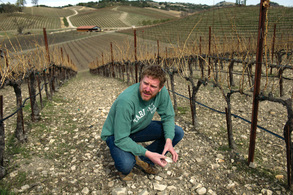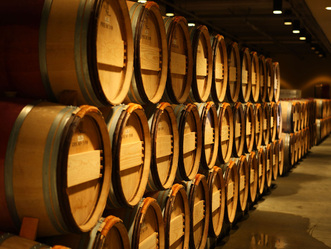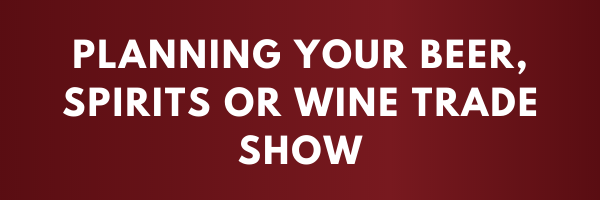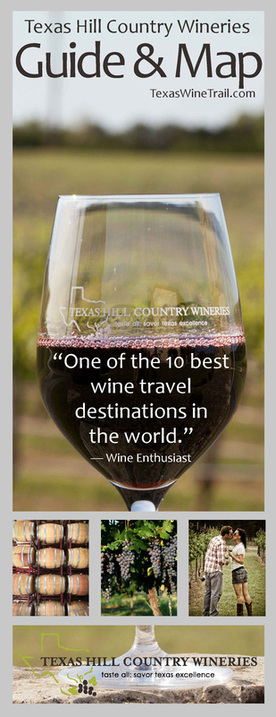|
Check out this amazingly detailed Infographic on Beer & Wine trends around the world from CompareCamp.
1 Comment
Original Source - Beverage Trade Network
BTN writes about the planning required by wineries, breweries and other brand owners to make their participation in Beer, Spirits or Wine Trade Show count. See helpful info below: How to Plan For Your Trade Show and Making Your Trade Show Display Stand Out 1.) Prepare, prepare, prepare! Get your marketing companies involved upfront and hold a planning meeting. It helps to have ideas from managers that have been to a lot of Trade Shows. 2.) Register and select a high traffic (open) space—it helps if you get registered very early on and attend the Show the year before so you know “the lay of the land.” 3.) Be sure to find out the size of the trade show display table you will have, whether there is wall space for your company sign, if there are electrical outlets available, and anything else that may or may not be included (i.e. a table cloth, etc.). Set a budget and stick with it—you can adjust for expenditures next year! 4.) Bring your own tablecloth, be sure to get one that complements your display and represents your company’s image and color scheme (without being overpowering). Even if a tablecloth is supplied, bring your own or something to add some depth to your table (i.e. a table runner). Your table will definitely stand out in a crowd. 5.) Set up a stand-alone presentation board. On the board, you can show how clients can benefit by using your services. Be creative and make it stand out. Include pictures, if possible, and be sure your company name and logo are more than obvious. 6.) If there is wall space, but your budget is minimal, use your trusty desktop publishing software to create a template of your company name. Use the template, along with bristle board, cardboard, or foam core to make a sign that you can put up on the wall behind your trade show display. 7.) Arrange your beverage brands or wine trade show display table in levels. Put the larger items at the rear, shorter items in front of those, and even shorter items in front of those. If you’re displaying beer, build a small bar so the patrons can sit at it and feel comfortable. If you’re displaying wine or spirits, make a small lounge with comfy couches. The customers will stick around longer if they feel comfortable in your booth. 8.) Show off your Brewery or your Winery--Develop a PowerPoint presentation or streaming video to display on your table. You can make it on your desktop computer and transfer it to a laptop, which you can rent or borrow if you don’t already have one. Your visitors will find this visually appealing and it will draw in their attention. Drawing Attention To Your Trade Show Display 9.) Draw attention to your booth: Have plenty of trade show logoed giveaways, such as business cards, brochures, pens, magnets, and anything else that has your company name and/or logo on it. Most people who attend trade shows are expecting to take home some goodies. Offer plastic bags with your brand name on them. And be sure to use display racks for showing your flyers, specials, brochures, and such. 10.) Offer something a little different as a trade show giveaway… FOOD. I displayed at the "NBWA" trade show in Las Vegas and included a basket of pretzels with horseradish mustard on my table—a great compliment for beer! They were a big hit; I wish I had bought more. If you can, package your food in a way that will allow you to have your company contact information on it. 11.) Offer Gift Certificates for some of your services as a trade show giveaway. There’s nothing better than getting a deal and when they “cash in” their certificate, they will see how valuable your services are and will come back for more. 12.) Have a drawing for a Grand Prize—get something nice (Logoed bicycle, motor scooter, decorated can for Parades, or blow up wine bottle are just a few ideas). Offer a prize that in some way complements your business if possible, and appeals to anyone. Have visitors and entrants sign a guestbook, fill in a ticket, or drop their business cards into a fish bowl or gift bag. The great thing about this trade show giveaway is that you can then use this information at a later date to make a follow up contact. 13.) Have a portfolio of your work available as part of your trade show display. Print off some of your best beer or wine displays or contests, put them into plastic sheet protectors, and arrange them in a binder. Then lay out the binder where visitors can flip through the pages. 14.) Hire the right help! If the trade show will be on for an extended length of time, be sure to have assistance in manning your trade show booth so you can take a break. If you don’t have the option of having someone take over for a bit, be sure to put up a note that tells people how long you will be gone or when you will be back. 15.) Most importantly, be friendly and inviting. Say "Hi" to those that turn and look toward you or your trade show booth. Strike up a conversation and be sure to have a short introductory speech ready. And… have fun! NEW Texas Hill Country Wineries Brochure is Out! It Features 42 Wineries, a New & Updated Map, & 28 Eat, Sleep, Travel Partners. You can download (.PDF) it here: http://texaswinetrail.com/images/uploads/misc/FINAL2014Brochure.pdf
 Rain or shine, we're under drought conditions - be good stewards of a precious resource. By Mark Greenspan. (Source Article) Quantification of water relations is key. That means we need to measure things. I’ve been a big fan of plant water status measurements, and you can refer to my previous articles on irrigation for deeper descriptions. The two pieces of plant moisture equipment that I rely on most are the pressure chamber and the porometer. I’ve described both in previous articles, but both are portable instruments that we use primarily during midday to measure plant water status. I find both tools to be indispensable. I only wish there were ways to make those measurements automatically because the short afternoon window, travel time and expense make extensive measurements with those instruments difficult and costly. I am looking at other options for these measurements; but until then, we are getting our money’s worth out of them. Knowing the water stress level of the vine allows us to modify our irrigation regime to dial in specific stress levels in the vines at certain times of the growing season and avoid going overboard with stress, potentially causing crop loss or quality reduction. ... Soil moisture monitoring has also allowed me to reduce the irrigation quantities applied once irrigation cycles begin. By monitoring the total amount of moisture being stored in the soil from an irrigation and then depleted by the vine, I almost always apply between 18 to 22 percent of crop evapotranspiration (Etc) as a maintenance (non-deficit) level. That is far less than is being applied by many growers, who believe that they are “deficit” irrigating at 50 to 60 percent of ETc. I believe the issue with the ETc model, in general, is that it does not account for stomatal pore closure, which occurs in the vines as the season progresses, even without water stress, but is greater (i.e., more closed) under desirable levels of water stress for fine winegrapes. Because I’ve discussed these measurements before and have not changed my practices, I will not go into their use further in this column but rather discuss general practices under drought conditions. ... Drought Management Practices There are many other practices that should be applied during periods of drought. Here is a brief list:
... To me and my certified crop advisor colleagues, irrigating deeper than the root system is a no-no. It not only pushes water past the root zone, where it cannot be taken up, but it also moves nitrate and other potential pollutants (think persistent and mobile pesticides) past the root zone and into the vadose zone (the zone between the root system and the water table). The soluble materials and water are either lost, or they move into the groundwater or in surface or subsurface run-off, all of which will occur in wetter climates. TO READ THE ENTIRE ARTICLE, VISIT WINE BUSINESS MONTHLY.  Why does your winery need insurance? Winery tours are incredibly popular these days and a great way to spend a weekend, especially in Texas and New Mexico. However, with each wine special event — whether a tasting, tour, catered dinner or wedding — there are risks that should be insured. If the event is hosted on the winery’s property, there are “two big things,” according to Peter Liesenfelt, account executive for Wine American Insurance Administrators. “If someone at a tour or event slips on the floor and falls, it is covered under general liability. The other thing that comes up is liquor liability, where there is a risk of someone drinking too much getting into an accident. Laurie Infantino, president of the Insurance Skills Center, agrees that a winery needs both a commercial general liability policy and a liquor liability policy. The CGL protects against bodily injury for things like slips, while the liquor liability policy protects against negligence in serving liquor either to a minor or to someone who becomes too intoxicated and causes an accident. Insuring wineries becomes more complicated when the special events are more than just a tasting, insurance experts say. For example, if the winery is taking guests on a tour on a mechanized car or train, or has amusement rides, there’s a bigger exposure. Or, if the winery has a house on its property that it rents out to guests, there is additional risk. If an outside caterer is hired for a special event, wineries should collect certificates of insurance naming the winery as an additional insured and making sure coverage is in force for general liability, workers’ compensation and even auto insurance, advises George Hunt, an agent with United Valley Insurance Agency. “You want to make sure they have auto in case they back over someone with their vehicle while delivering the food,” for example, “and make sure they have workers’ comp for workers doing the serving so that if someone gets hurt, the person can’t come back against the winery,” Hunt adds. These are just a few of the basic reasons why your winery needs insurance. To learn more about all the insurance coverages Regnier Insurance can provide for your winery, please visit www.regnierinsurance.com/wineries or feel free to contact us at [email protected] or (800) 252-9435. |
WinStar
|
|
© 2024 WinStar Insurance Group
13625 Ronald W. Reagan Blvd. Building 3, Suite 100 Cedar Park, TX 78613 |
IMPORTANT NOTE: This Web site provides only a simplified description of coverages and is not a statement of contract. Coverage may not apply in all states. For complete details of coverages, conditions, limits and losses not covered, be sure to read the policy, including all endorsements, or prospectus, if applicable. Coverage CANNOT be bound, amended, or altered by leaving a message on, or relying upon, information in this Website or through E-Mail.
Licensed & doing business in the following states only: Texas, New Mexico, & Oklahoma
Licensed & doing business in the following states only: Texas, New Mexico, & Oklahoma





 RSS Feed
RSS Feed


